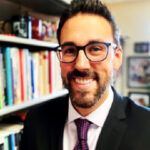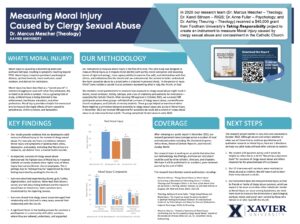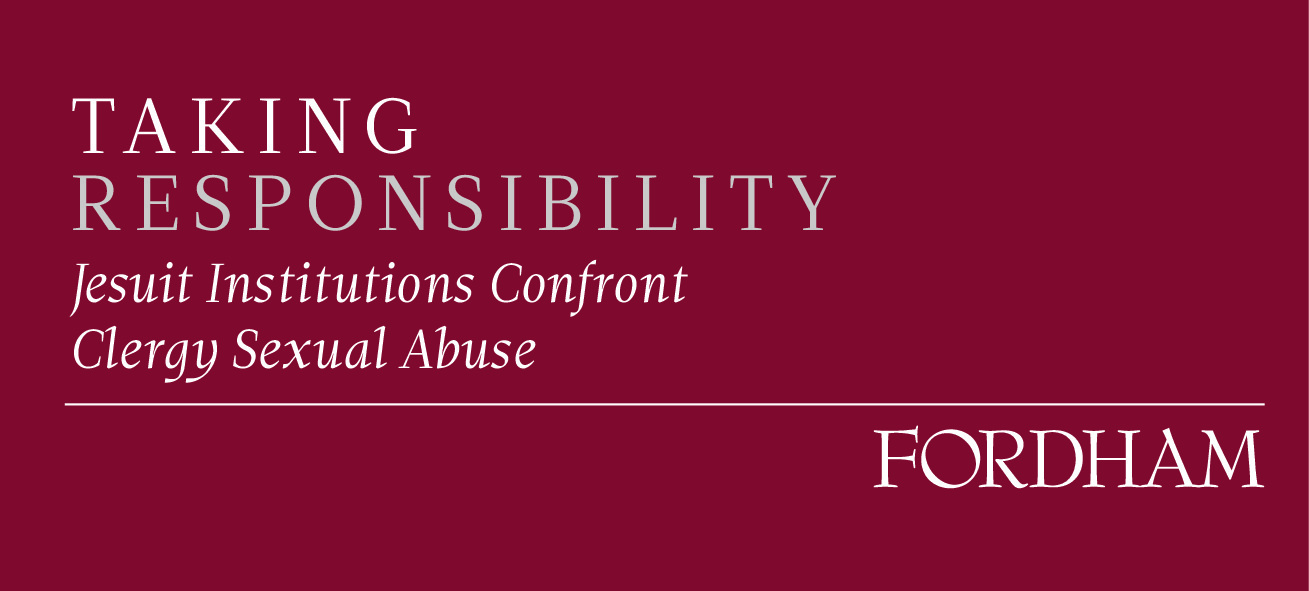Five Questions with Marcus Mescher and Ashley Theuring on Moral Injury

Marcus Mescher is associate professor of Christian ethics, specializing in Catholic social teaching and moral formation. In addition to earning his M.T.S. and Ph.D. at Boston College, he worked in parish youth ministry and college campus ministry for almost ten years. Dr. Mescher is the author of more than a dozen academic essays and book chapters as well as many popular articles on topics ranging from the ethics of marriage and family life to the moral impact of digital devices to the application of Ignatian spirituality for healthcare settings. His first book, The Ethics of Encounter (Orbis, 2020), proposes how to build the “culture of encounter” championed by Pope Francis in the pursuit of developing an inclusive and equitable “culture of belonging.”
 Ashley Theuring is Assistant Professor of Theology, specializing in constructive and practical theologies. She completed her doctorate at the Boston University School of Theology in the Practical Theology program. Her first book, entitled Fragile Resurrection (Wipf and Stock, 2021), explores the question “What constitutes hope after domestic violence?” Dr. Theuring’s theological research is informed by her past work at a rape, crisis, and abuse center, Women Helping Women of Hamilton County, where she was as an advocate and educator. Her research continues to be informed by contemporary communities of trauma survivors and focuses on exploring religious practices, meaning making, and survival in response to trauma.
Ashley Theuring is Assistant Professor of Theology, specializing in constructive and practical theologies. She completed her doctorate at the Boston University School of Theology in the Practical Theology program. Her first book, entitled Fragile Resurrection (Wipf and Stock, 2021), explores the question “What constitutes hope after domestic violence?” Dr. Theuring’s theological research is informed by her past work at a rape, crisis, and abuse center, Women Helping Women of Hamilton County, where she was as an advocate and educator. Her research continues to be informed by contemporary communities of trauma survivors and focuses on exploring religious practices, meaning making, and survival in response to trauma.
1) Could you tell us a little more about your research? What is “moral injury?” How did you come up with the tool to measure it?

When people witness or engage in actions that conflict with their deeply held beliefs or values, it can cause moral distress, guilt and shame, and social isolation. Several decades ago, veterans reflecting on their experience of combat described symptoms that overlap with PTSD but included self-condemnation, a loss of trust, and moral disorientation. They coined the term “moral injury” to describe a sacred wound caused by a profound betrayal reaching the deepest part of the human being. Moral injury comprises a number of symptoms, including anger or resentment caused by the experience; a sense of powerlessness, hopelessness, or dread; loss of meaning or purpose; loss of faith or feeling abandoned by God; inability to trust or forgive oneself and others. There is no single definition of moral injury, but it is typically understood to result from a moral violation in a high-stakes situation, causing a person to lose faith in one’s own goodness, a reliable moral order, and the ability to trust other individuals and institutions. Over the last few years, moral injury has been applied to a variety of professional settings, including healthcare, law enforcement, and education.
The majority of work being done on moral injury is led by VA chaplains, psychologists and psychiatrists, and some philosophers. There aren’t many theologians who have addressed moral injury, and as a result, the literature has focused more on the psychological dimension than the spiritual, religious, or moral dimensions of moral injury. We assembled a team of scholars at XU to weave together expertise in psychology, social work, trauma-informed theology, and theological ethics. Since no tool existed to measure moral injury caused by clergy sexual abuse, we consulted existing instruments, including those developed by Harold G. Koenig, MD, to create a novel instrument to measure moral injury caused by clergy sexual abuse.
2) You explained in your interviews that this tool considers moral injury across different dimensions of life: identity, agency, reasoning, relationships, etc. How is one’s relationship with God considered and measured in this context of clergy sexual abuse? What moral injuries are frequent in this particular dimension of life?
To fill in the gaps left by other scholars, we wanted to scrutinize the moral fallout of betrayal, especially when perpetration is done by clergy (and sometimes is concealed by other clergy). We also were interested in how to understand how this would impact people’s relationship with God and the Catholic Church, given that clergy represent what is sacred or holy, and for many people, priests are closest to or are a stand-in for God. (NCR covered the “added weight” dimension of moral injury caused by clergy sexual abuse here.)
In our survey, we asked questions like:
- I felt abandoned by God
- I questioned God’s love for me
- I questioned the power of God
- I questioned where God was during this situation
- I felt as though God had let me down
- I felt angry at God
- I felt or feel unable to access or communicate with the divine/a God
- I believe my relationship with God can be made right
In our statistical analysis, we looked for overlaps in responses and shared some preliminary findings in our public report. There is still more statistical analysis that we can run to better understand how moral injury impacts individuals, given that each person experiences betrayal differently. We have learned that hearing one survivor’s story is exactly that: one survivor’s story. Moral injury has common threads, but its acuity can range across whether one is a survivor, a perpetrator, a bystander or witness, or exposed to an unhealthy system or environment. (Given this range of factors, Marcus proposed a taxonomy of moral injury in this peer-reviewed essay, published last year.)
Some survivors told us that their relationship with God was irreparably damaged. Others have been able to find strength in turning to their relationship with God, perhaps in a way that is more spiritual or connected to nature than one mediated by religious belief or belonging to an institutional church. In our research, we found only a few survivors still feel comfortable in or connected to the Catholic Church. Our goal is to identify consistent trends in people’s experience of moral injury so we better understand the psychological, moral, social, and religious wounds people carry–and how to best help them heal.
3) Have you heard of any church or organization that has already used this tool? If so, could you tell us more about how they did it and its impact? If not, have you thought about how it could be promoted?
 We have not published the tool yet, so it has not been used in any other settings to date. Our statistical analysis confirms we have a valid measure of moral injury, but because our survey included dozens of questions, we’re still working to identify the most reliable indicators of moral injury so this can be peer-reviewed and made public. Unfortunately, three of the five members who formed our initial research team either retired or left XU, so we haven’t been able to complete this process yet. But we have heard from a number of other scholars–from all over the world–who would like to use this tool.
We have not published the tool yet, so it has not been used in any other settings to date. Our statistical analysis confirms we have a valid measure of moral injury, but because our survey included dozens of questions, we’re still working to identify the most reliable indicators of moral injury so this can be peer-reviewed and made public. Unfortunately, three of the five members who formed our initial research team either retired or left XU, so we haven’t been able to complete this process yet. But we have heard from a number of other scholars–from all over the world–who would like to use this tool.
After the instrument is published in a peer-reviewed academic journal, other researchers can help verify its reliability. That process will likely involve churches and organizations working together with researchers to implement the tool in their communities. We focused mainly on how moral injury impacts one’s identity, moral reasoning, agency, relationships, and trust in institutions. It may also be the case that other scholars will modify the instrument to explore other dimensions of harm, including the relationship between moral injury and mental health or PTSD, or one’s relationship to God, with friends and family, or other members of their school or parish community.
4) In your view, what should be the church’s (or the Jesuits’) priority and next steps while addressing and confronting moral injury resulting from clergy sexual abuse?
At bottom, moral injury is caused by a betrayal of sacred trust. Trust is not easily rebuilt; it takes a consistent demonstration of genuine concern for others over time. The Catholic Church is not known for its transparency or accountability. Laity do not make policy decisions, and in many cases, do not make personnel decisions, either (like whether to hire or fire a pastor). We need a church that is more open and imbued with a spirit of inclusion, equality, and empowerment, or at least more co-responsibility than we have seen.
We also need to cultivate greater awareness, compassion, and solidarity among all members of the church. In several cases, survivors told us that the backlash, blame, and rejection by others in the church was as hurtful–and sometimes even more of a betrayal–than the original abuse.
We need more support for research so that survivors and lay people can better understand the ripple effects of moral injury and how to prevent and redress harm. This includes more analysis of how best to implement change at the structural level of the church. Funding research would help verify and enhance the instrument to measure moral injury as it can be found across the church. Funding is also needed to support public discussions on the psychological, moral, religious, and interpersonal wounds that people carry so that people can process the trauma of this betrayal together.
Public spaces and shared rituals (like Loud Fence) can ensure survivors are seen, heard, believed, and supported. There are still many Catholics who believe that the clergy sexual abuse crisis is behind us. This trauma is still impacting the church as a whole and will continue to for generations. Our study focused on clergy sexual abuse of children, but we have learned that abuse of adults still needs much more attention.
As long as sacred trust continues to be broken, we will need to find more ways to gather for truth-telling and taking steps for personal, relational, and institutional healing.
5) What questions remain unresolved for you in light of your research? How might you or others devise strategies for answering those questions?
Creating a novel instrument to measure moral injury caused by clergy sexual abuse required countless hours of research, discussion, and revision. But it is simply the first step in a long process of better understanding the dimensions of harm caused by the abuse of sacred power in the Catholic Church.
One of the unnamed problems of this work is that it is psychologically, emotionally, and intellectually taxing. Judith Herman, MD illustrates the cyclical pattern of trauma in the public psyche, which is not something anyone can study without it having an impact on them. Learning about trauma and moral injury has to be a community effort. St. Paul writes that the church is like the Body of Christ, and if one part of the body suffers, “all the parts suffer with it” (1 Cor. 12:26). We need more strategies to bring people together to reflect on the wounds they carry and then give people tools to make healing possible. Research is an important dimension of this work, since we cannot heal wounds we do not understand. Universities can be vital places to generate healing, since we can bring scholars together across many disciplines. We can and should work with chaplains, counselors, therapists, social workers, psychologists, psychiatrists, clergy, vowed, and lay people to take on various pieces based on our expertise, experience, and social location.
Ashley is finishing a manuscript (with Orbis Books) that focuses on the impacts of our narratives around suffering, salvation, sexuality, gender, and childhood, which contribute to the lack of language and frameworks for understanding the experience of clergy sexual abuse. This compounds the moral injury experienced by survivors. New narratives formed by tradition, but sensitive to the issue of clergy abuse, can decrease vulnerability before abuse, diminish moral injury experienced in situations of abuse, and promote healing for those already morally injured.
Marcus is completing a book (with Paulist Press) entitled, A Morally Injured Church: A Body of Broken Bones. He is focusing in particular on how moral injury impacts the moral conscience: our personal and collective capacity to know and choose what is right, good, true, and just. Since “conscience” means “to know together,” moral injury impacts individuals, relationships, and the whole church. For example, when shame is present, empathy is almost always absent, which has important implications for moral perception, reasoning, and agency. This does not just affect survivors of clergy sexual abuse, but the entire church. We still have a lot to learn about the wounds people carry and what it will take to heal them.
Moral Injury Report - Measuring & Exploring Moral Injury Caused by Clergy Sexual Abuse, by Marcus Mescher, Kandi Stinson, Anne Fuller, and Ashley Theuring.
